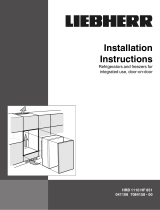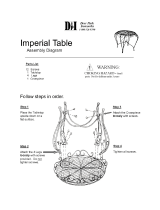
Depending on the climate classification the
appliance is designed to operate in restricted
ambient temperatures. The climate classifica-
tion applying to your appliance is printed on the
rating plate.
Note
u
Keep to the specified ambient temperatures
in order to guarantee that the appliance works
properly.
Climate classi-
fication
for ambient temperatures of
SN 10 °C to 32 °C
N 16 °C to 32 °C
ST 16 °C to 38 °C
T 16 °C to 43 °C
1.3 Conformity
The refrigerant circuit has been tested for leaks. In installed
condition, this appliance complies with the applicable safety
stipulations and with directives 2014/35/EU, 2014/30/EU,
2009/125/EG, 2011/65/EU and 2010/30/EU.
1.4 EPREL database*
Details about energy labelling and ecodesign requirements will
be available on the European product database (EPREL) from
1st March 2021. You can access the product database at the
following link: https://eprel.ec.europa. eu/ You will be asked to
enter the model ID. You can find the model ID on the name-
plate.*
1.5 Saving energy
-
Pay attention to good ventilation. Do not cover ventilation
holes or grids.
-
Always keep the fan air slits clear.
-
Do not install the appliance in direct sunlight, next to an
oven, radiator or similar.
-
Energy consumption depends on the installation conditions,
e.g. the ambient temperature (see 1.2 Appliance range of
use) . A warmer ambient temperature can increase the
energy consumption.
-
Open the appliance for as short a time as possible.
-
The lower the temperature is set the higher the energy
consumption.
-
Sort your food: home.liebherr.com/food.
-
Keep all food properly packed and covered. This prevents
frost from forming.
-
Only take food out for as long as necessary so that it doesn’t
warm up too much.
-
Inserting warm food: allow to cool down to room temperature
first.*
2 General safety information
Danger for the user:
-
This device can be used by children and
people with impaired physical, sensory or
mental abilities or with a lack of experi-
ence and knowledge provided that they are
supervised or have received instruction in
the safe use of this device, and about the
resulting hazards. Children must not play
with this appliance. Cleaning and user main-
tenance work must not be carried out by chil-
dren without adult supervision. Children aged
between 3 and 8 are allowed to load and
unload the appliance. Children below the age
of 3 must be kept away from the appliance
unless they are under continuous adult super-
vision.
-
When disconnecting the appliance from the
supply, always take hold of the plug. Do not
pull the cable.
-
In the event of a fault pull out the mains plug
or deactivate the fuse.
-
Do not damage the mains power cable. Do
not operate the appliance with a defective
mains power cable.
-
Repairs, interventions on the appliance and
the replacement of mains connection line may
only be carried out by After-Sales Service or
other suitably trained specialist personnel.
-
Only install, connect and dispose of the appli-
ance according to the instructions.
-
Only use the appliance when it is installed.
-
Please keep these instructions in a safe place
and pass them on to any subsequent owners.
Fire hazard:
-
The coolant used (information on the model
plate) is eco-friendly but also flammable. Any
leaking coolant may ignite.
•
Do not damage the refrigerant circuit pipes.
•
Do not handle ignition sources inside the
appliance.
•
Do not use electrical appliances inside the
appliance (e.g. steam cleaners, heaters, ice
cream makers, etc.).
•
If the refrigerant leaks: remove any naked
flames or ignition sources from the vicinity
of the leakage point. Properly air the room.
Inform customer services.
-
Do not store explosives or sprays using
combustible propellants such as butane,
propane, pentane, etc. in the appliance. To
identify these spray cans, look for the list
of contents printed on the can, or a flame
symbol. Gases possibly escaping may ignite
due to electrical components.
-
Please be sure to store alcoholic drinks or
other packaging containing alcohol in tightly
closed containers. Any alcohol that leaks out
may be ignited by electrical components.
General safety information
* Depending on model and options 3



















